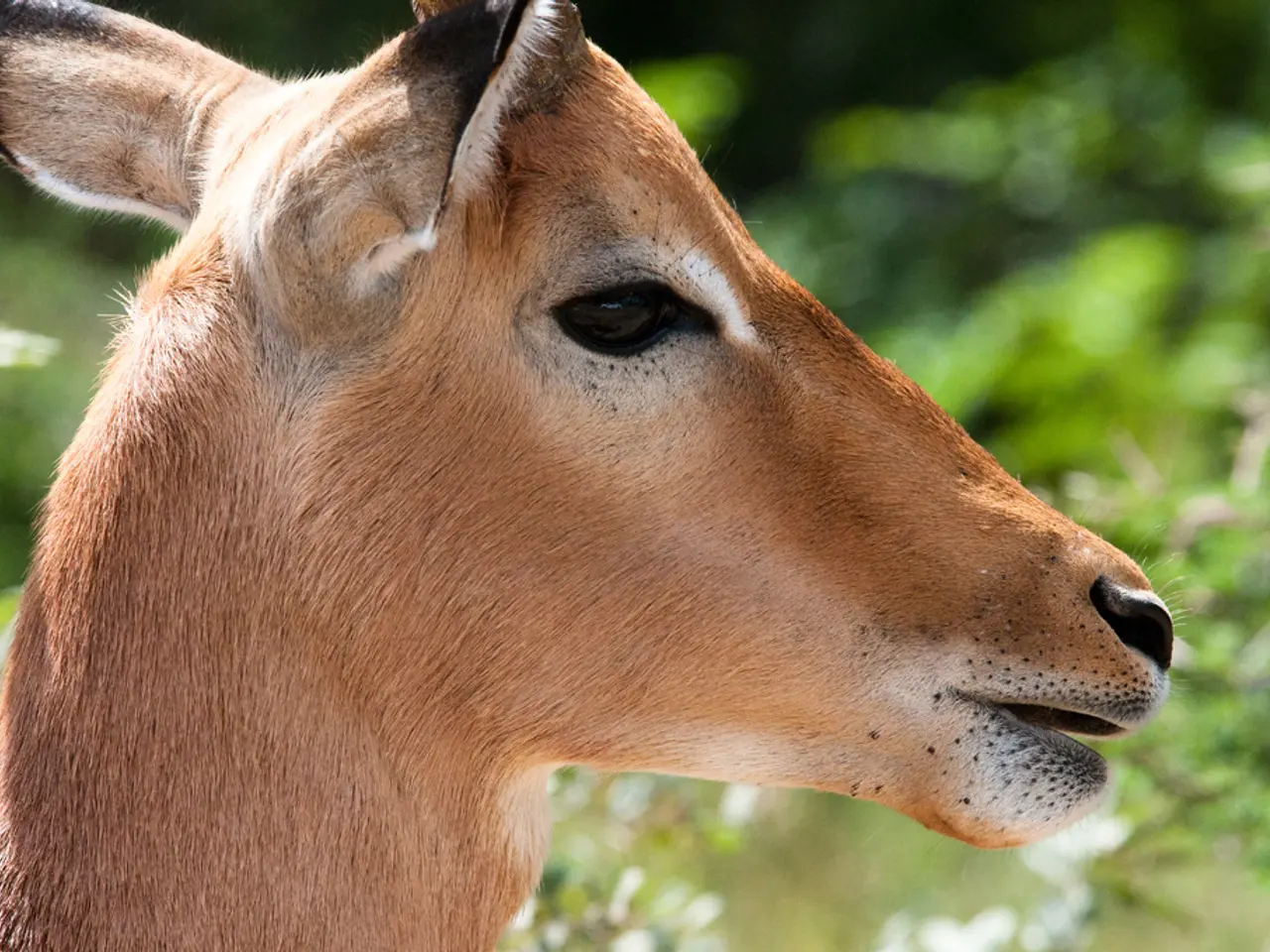Spotting a Moose in New England: A Guide for the Observant Outdoor Explorer
Spotting Moose in New England: A Guide for Responsible Wildlife Viewing
Moose, the iconic large-antlered mammals, are a sight to behold in the wilderness of New England. With their numbers dwindling due to the increased prevalence of the winter tick, caused by climate change, it's more important than ever to responsibly enjoy these majestic creatures.
Moose are most active and visible during specific seasons and times. Spring is when calves leave their mothers and start exploring new territories. You can find them in wetland areas, especially near roads as they seek runoff and salt or mineral licks. As summer approaches, they tend to appear in wetland areas. In the fall, they spend time in open, cleared areas, making it an ideal season for sightings.
The best locations for spotting moose include Kokadjo near Moosehead Lake in Maine, known as moose country with its forest trails and lakeside views. In New Hampshire, Province Lake Road, Pine River Pond, and conservation lands along Route 153 and Hobbs are notable spots. For those seeking guided tours, Maine offers daily year-round tours around Sandy Stream Pond near Katahdin. Early mornings, especially at dawn, are optimal for sightings as moose tend to be more active then.
For a safe and enjoyable experience, maintain a respectful distance. Getting too close can put you in danger and make the animal feel unsafe and stressed. Use binoculars or zoom lenses for close views rather than approaching them. Stay on marked trails or roads, and be especially cautious around dawn and dusk when visibility is lower and moose are active.
Following the Leave No Trace principles is crucial for protecting moose habitat and ensuring sustainable wildlife viewing. This includes planning ahead, staying on existing trails to avoid habitat disturbance, packing out all trash, respecting wildlife by observing from a distance without feeding or provoking animals, and being considerate of other visitors to preserve the natural experience for others.
It's essential to remember that moose attacks are rare, and appreciating them from a safe distance is a rewarding benefit of being outdoors in the Northeast. New Hampshire's moose population is estimated to be around 3,000 to 4,000, while Maine's population is estimated to be between 60,000 and 70,000. Roughly 2,000 moose live in Vermont.
In northern New England, moose are specifically found in the forests of Maine and New Hampshire. In Maine, they are prevalent throughout the state, including the 100-Mile Wilderness where several AMC lodges and cabins are located. Moose in New Hampshire are mostly found in Coos County, north of AMC's Pinkham Notch Visitor Center.
Moose can be found not just in New England but also in Alaska, regions of the Rocky Mountains, and other northern regions. Their tracks, which look like deer tracks but are larger, about the size of human hands, are a telltale sign of their presence. The imprints vary from two to four feet apart, depending on how fast the moose is moving.
However, lower-light conditions at these times of day present risks for driving, potentially causing moose crashes. So, always drive carefully and watch out for these gentle giants of the wild. By following these guidelines, you can maximize your chance to enjoy moose sightings responsibly and safely in New England's wilderness.
The lifestyle of enjoying the wilderness can include exploring home-and-garden-like outdoor-living spaces occupied by moose, such as wetland areas or open, cleared areas. For a true encounter with these majestic creatures, consider visiting known spots like Kokadjo near Moosehead Lake in Maine or Province Lake Road in New Hampshire, all while following responsible viewing guidelines.




